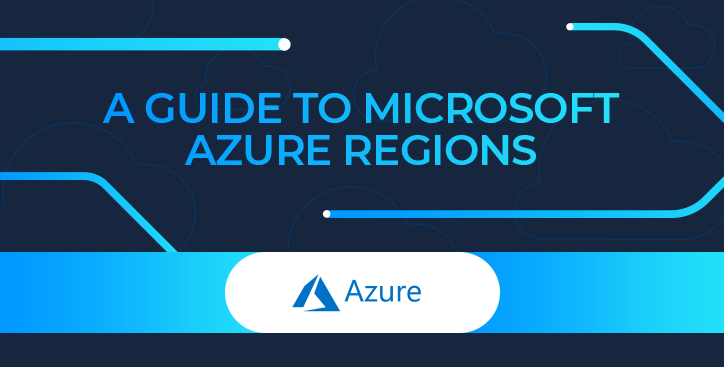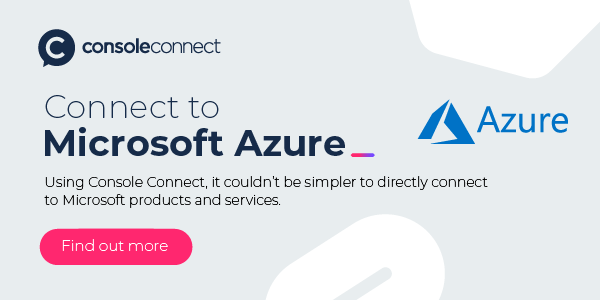A guide to Microsoft Azure Regions
By Alex Hawkes|14 March, 2022

The global footprint of Microsoft Azure is made up of physical infrastructure of over 200 data centres and connective network components, arranged into regions, and linked by a large interconnected network.
Each of the Azure data centres provides high availability, low latency, scalable cloud services close to users to improve reliability and speed.
In this blog, we look at the Azure Regions, and explain the benefits of using a direct connection to access Azure infrastructure.
Overview of Azure locations
In the market since 2010, Microsoft Azure has grown into a sprawling product portfolio of over 200 fully featured offerings across Platform-as-a-Service (PaaS), Infrastructure-as-a-Service (IaaS), and Software-as-a-Service (SaaS), including well-known enterprise applications such as Office 365 and Skype.
Microsoft Azure has a presence in 60+ regions worldwide and is available in 140 countries. As with its competitors, Microsoft has its own definitions for the methods it uses to arrange its cloud infrastructure.
An Azure region is a set of data centres, deployed within a latency-defined perimeter and connected through Azure’s own dedicated regional low-latency network.
An Azure geography is a segmented market containing one or more regions, that preserves data residency and compliance boundaries. This enables customers with specific data-residency and compliance needs to keep their data and applications in specific locations.
What are availability zones?
Azure Availability Zones are unique physical locations within an Azure region made up of one or more data centres equipped with independent power, cooling and networking. This protects applications and data from facility-level issues as data is replicated across Availability Zones to protect from single points of failure.
Microsoft said its approach in designing data centre regions using Availability Zones is to support synchronous replication, while ensuring physical separation to offer protection and isolation from localised failures, including fires, flooding, or unforeseen disaster.
There is a latency perimeter of less than two milliseconds between Availability Zones, and Microsoft encrypts all data that is traversing within or between regions.
By the end of 2021, every country which hosted a data centre region also delivered Azure Availability Zones, and every new data centre region launched going forward will include Azure Availability Zones. Relatively new markets include Brazil and Indonesia, and Microsoft is also focusing on building out its footprint further in existing markets in the United States and China.
China has been a focus for Azure since 2014, when Microsoft launched Azure with its local operating partner, 21Vianet. In order to meet the China market’s growing needs for global public cloud services, Microsoft is planning to bring a new Azure Region to North China in 2022, effectively doubling the capacity of its cloud portfolio in China in the coming years.
Azure regions with availability zones
Americas |
Europe |
Africa |
Asia-Pacific |
| Brazil South | France Central | South Africa North | Australia East |
| Canada Central | Germany West Central | Central India | |
| Central US | North Europe | Japan East | |
| East US | Norway East | Korea Central | |
| East US 2 | West Europe | Southeast Asia | |
| South Central US | Sweden Central | East Asia | |
| US Gov Virginia | China North 2 | ||
| West US 2 | |||
| West US 3 |
These physical and network components keep data entirely within the trusted Azure network, so IP traffic never enters the public internet.
Benefits of a direct connection to Azure locations
In the Microsoft cloud world, direct connectivity to Azure is carried out through Azure ExpressRoute, which enables organisations to extend on-premise networks into the Microsoft cloud over a private connection with the help of a Network-as-a-Service (NaaS) connectivity provider such as Console Connect.
ExpressRoute can also be used to establish connections to Microsoft specific SaaS packages such as Microsoft 365.
As with other public cloud interconnect options ExpressRoute connections don't go over the public internet, which means more reliability, faster speeds, consistent latencies, and higher security than typical connections over the internet.
Working with a NaaS partner such as Console Connect, you don't need to install and maintain routing equipment in a colocation facility. Console Connect’s offering enables enterprises to interconnect data centres with Azure and other cloud assets on-demand anywhere in the world, rather than being locked into any single ecosystem.
Leveraging Console Connect’s own private global network infrastructure, the platform provides direct and on-demand connections to the following Azure regions:
- East Asia
- Southeast Asia
- Japan East
- UK South
- North Central US
The simplified user experience of the Console Connect management portal offers real-time visibility into network performance across your Azure assets, which means you can continually adapt and optimise your network connectivity to meet the changing needs of your business.


.jpg)





.jpg)
